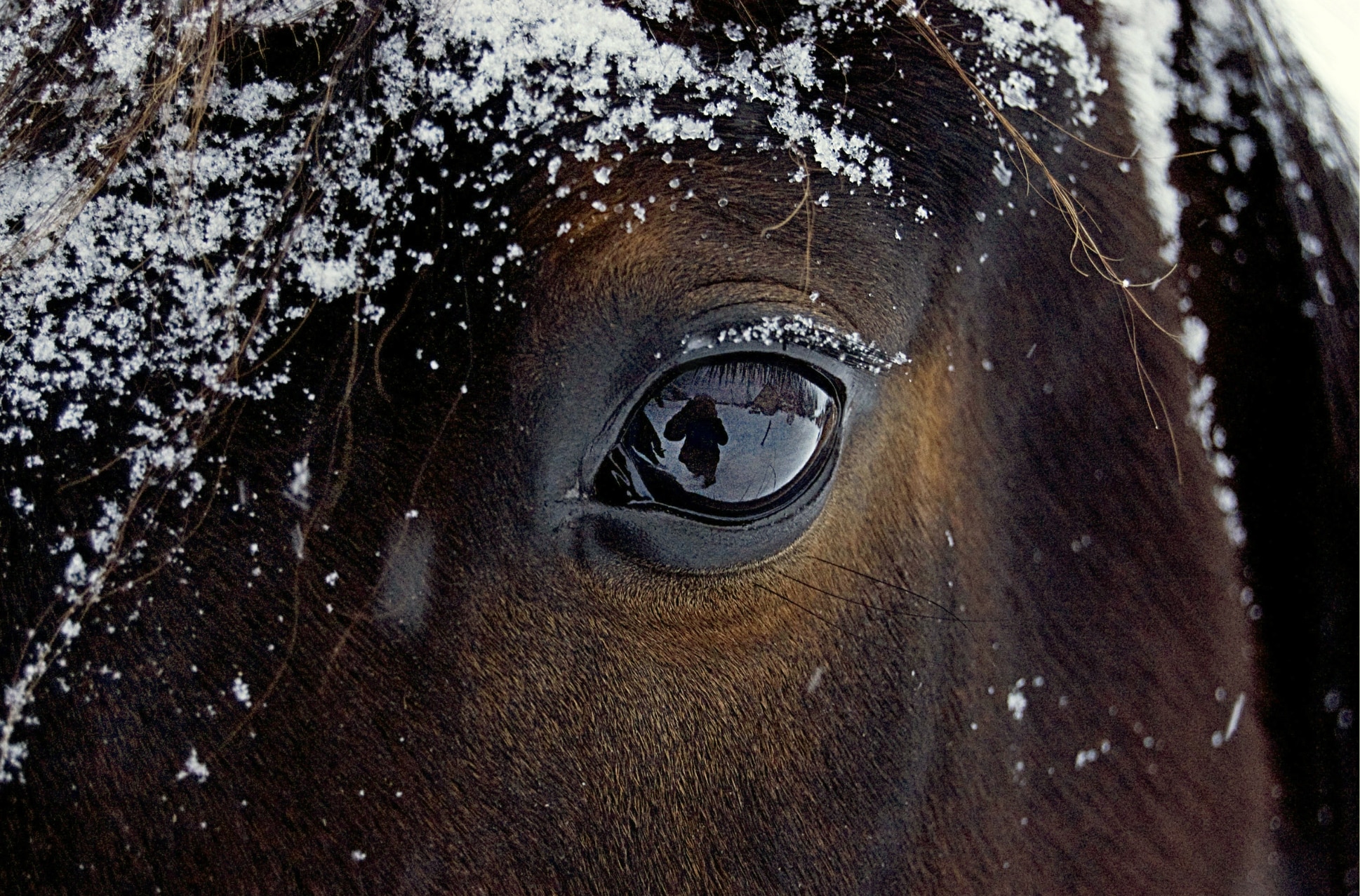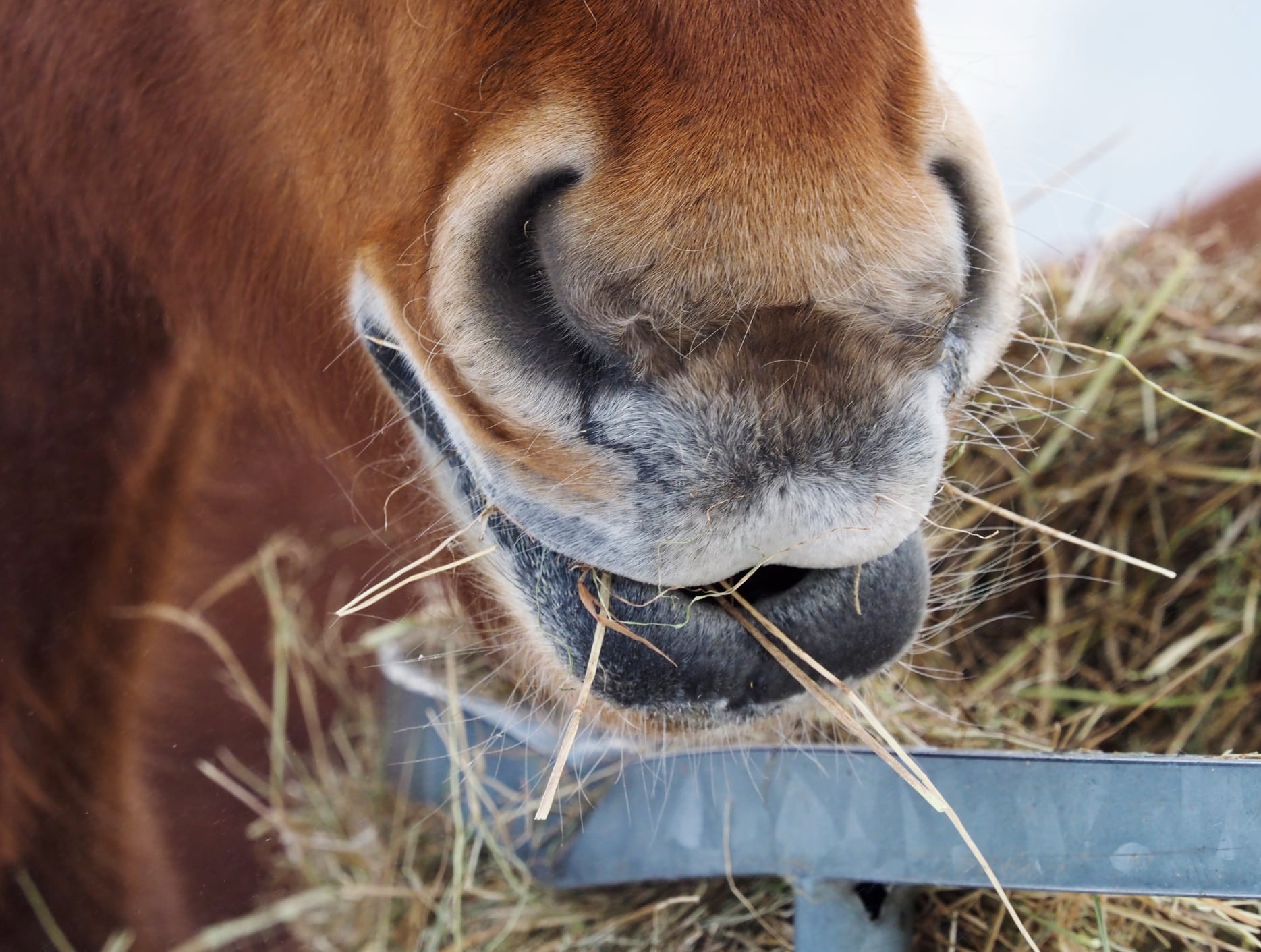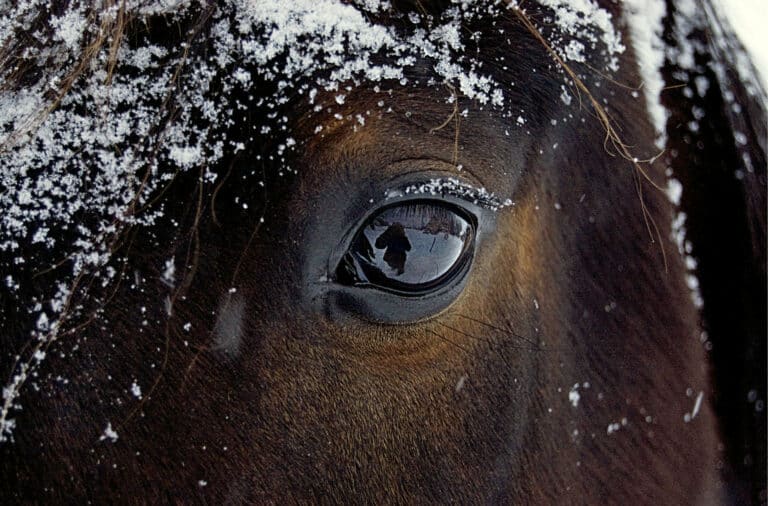
Winter feeding for health and immunity
Making changes to your horse’s feeding program during the colder months can improve their wellbeing. Equine nutritionist LARISSA BILSTON explains the benefits.
Sometimes it only takes a small feeding or horse husbandry change to provide significant health benefits over winter. But why is it that horses need a change to their feed regime over the colder months?
Winter pastures in many parts of Australia can be lower in quality and quantity at the very time of year when horses’ requirements for good forage are increasing as they burn extra calories to keep warm. Older horses in particular can have trouble maintaining weight through cold weather as their bodies become less efficient at producing, processing and absorbing nutrients.
Horses can also be prone to developing a runny nose through the change of season, and in some areas wet weather increases the risk of mycotoxin ingestion. So having strategies in place to help your horse through winter is a sensible approach. These strategies might include:
Health checks
If you have a horse who struggles to hold weight over winter, now is the time to ensure that your worming program is up-to-date and that dental and other health or veterinary issues are dealt with before the full stress of winter hits.
Keep them warm
The two most important things you can do to help horses prone to winter weight loss are also the two easiest: keep them warm and feed them plenty of hay.
Keeping warm in cold weather burns body fat, so the appropriate use of rugs, wind breaks, shelters and stables helps less thrifty individuals hold condition over winter. And a bonus for horses eating plenty of forage during cold weather is that the microbial fermentation of fibre in the hindgut produces heat and has a ‘warming’ effect.
Provide adequate roughage
Plant growth is naturally slower in winter due to the longer nights and less sunlight hours for photosynthesis to occur. Growth is further restricted by cold weather, frost, drought and water-logged conditions. When pasture is in limited supply, it is essential to provide enough good quality grass or meadow hay to fill the gap in pasture availability. If you feed lucerne or cereal hay, limit these to no more than 30% of total intake.
Hard-keepers and underweight horses will benefit from access to free choice grass hay whenever pasture is overgrazed or the average length of leaves in the pasture falls below ankle height. Horses with poor teeth who ‘quid’ or ‘ball up’ long stem roughage will need chaff (made predominantly from grass hay if possible) rather than hay or long grass.
Although spring and autumn are the highest risk times for laminitis, it is important to carefully monitor pasture and horses through winter as well. Overweight horses and those with metabolic conditions should not have access to short, green, or frost affected grass as these are higher in the sugars and carbohydrates that can trigger laminitis.
Keep them drinking
Some horses don’t drink enough water during colder weather, which can lead to impaction colic. Encourage drinking by:
- Providing fresh clean water that is not too hot or too cold
- Keeping water under cover especially if bat or bird droppings are likely to contaminate it
- Emptying and cleaning the water trough every few days to avoid algae, bird droppings and dead insects building up in the water
- Adding 7-10 grams of salt per 100 kilograms of horse bodyweight to their feed to encourage healthy levels of water intake. Remember to include the salt content of pre-mixed hard feeds when calculating how much to add.

Is there enough protein?
An adequate quantity of moderate to good quality roughage usually provides enough protein to meet the needs of adult horses. Pregnant, lactating or growing horses may need extra protein in their diet. Some older horses are less efficient at digesting protein and may need supplementary protein. Higher protein feeds include lucerne, clover, soy or legume products. Performance horses can benefit from a boost of the amino acid leucine immediately after work to help switch on muscle building and repair pathways.
Add calories, but only as required
Although many mature easy-keeper horses and ponies at rest or in light work hold body condition easily from hay and grass alone, others need more calories over winter to prevent an unwanted loss of weight. A hard feed of grains and/or superfibres is often necessary for Thoroughbred types, those in harder work, and ageing horses – but when choosing a hard feed for older horses you need to take into account the condition of their teeth and digestive efficiency. Remember to always ensure adequate roughage (as pasture or hay) is available before deciding to introduce or increase hard feeds.
It is healthier to make small and regular adjustments to the diet to maintain optimal body condition rather than making drastic changes once a horse becomes very overweight or underweight. If using oils as a means of adding calories, be aware of their omega-3, 6 and 9 content and include an appropriate omega-3 balancer to optimize immune system function.
The amount of concentrate required depends on the horse’s size, level of activity or breeding status, and the individual’s metabolism (easy keeper or hard keeper). Another major factor impacting concentrate requirements is the ever-changing calorie content of pasture. Because changes in roughage quality are often not visible, it is important to remove winter rugs at least every two weeks to monitor for changes in body condition.
Balance vitamins, minerals and fatty acids
Feeding a correctly formulated diet complete with all the vitamins, minerals and fatty acids in balance allows the horse’s body to function optimally. This can result in improved fuel efficiency and immune function to help them through the cold of winter.
Grass and hay alone do not give a horse all the minerals required for optimal health. Supplement by providing the full recommended amount of a quality pre-mixed feed, or by adding a balancer powder/pellet to an unfortified feed. If feeding a reduced rate of pre-mixed pellets or muesli, use a balancer powder to top up and balance your horse’s vitamin and mineral requirements. If your horse is prone to respiratory disease or over 15 years old, consider adding extra antioxidant nutrients such as vitamin C, natural vitamin E, and organic selenium.
Manage mycotoxin risk
Fungi love growing in wet conditions and unfortunately this includes the fungi that grow on grass, grass seeds, hay, silage, grains and stored horse feeds, producing harmful and invisible mycotoxins. Horse health, welfare and physical performance can be severely impacted by eating mycotoxin-contaminated food and pasture.
Because there are many types of mycotoxins which can act on many organs, symptoms can vary widely. Symptom severity depends on the type and amount of toxin present and the individual’s immunity or tolerance to mycotoxins. Affected horses need the help of a broad-spectrum mycotoxin binder to stay in top health.

Nutraceuticals for joint care
Horses with osteoarthritis often ‘feel their bones’ and suffer more pain during the cold of winter. Whilst feeding cannot cure degenerative joint problems, adequate vitamin and mineral supplementation supports your horse’s joint health. Vitamins B6, C and E and the minerals manganese, copper and zinc are required to help the body build, maintain and repair joint fluids, connective tissues, muscles and bones.
Orally ingested joint supplements containing hyaluronic acid (HA), MSM, glucosamine and DHA omega-3s can have anti-inflammatory and analgesic (pain relieving) affects. These can be used in addition to veterinary oral or injectable treatments where required.
It’s worth the effort
Maintaining horses in optimal health and condition over winter takes a little extra attention to forage availability, body condition, and tweaking a well-balanced hard feed. Your efforts will be rewarded with the satisfaction of horses that glow with a healthy winter shine!
Larissa Bilston, BAgrSc (Hons) is the Equine Nutritionist for Farmalogic.



